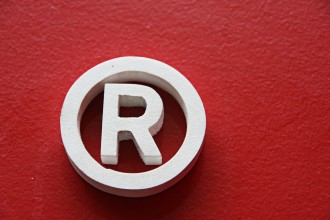
June 18, 2019
How is the Likelihood of Confusion Analysis Different in Registration Decisions Versus Infringement Decisions?
A recent case in the Eastern District of Virginia federal court (“ED VA”) provides an excellent example of the differences between trademark registration and trademark infringement decisions.
Combe, Inc. v. Dr. August Wolff GmbH & Co. arose out of an opposition filed by Combe, the owner of the VAGISIL brand, against Wolff’s application to register the VAGISAN mark. The USPTO’s Trademark Trial and Appeal Board (“TTAB”) sided with Wolff and dismissed the opposition, but Combe sought review in the Eastern District of Virginia. This type of civil action is less frequently used to challenge TTAB decisions, but it provides the crucial advantage of being able to enter new evidence, which the more popular appeal to the Court of Appeals for the Federal Circuit does not.
In addition to challenging the dismissal of its opposition, Combe added claims of federal trademark infringement, unfair competition, and dilution, as well as Virginia state law claims of statutory and common law trademark infringement and unfair competition. These claims were unavailable in the opposition before the TTAB because the USPTO can only make decisions on the registration of marks. While proper subject matter for the ED VA’s consideration, the court dismissed all of these additional claims because Wolff had never used the VAGISAN mark in commerce in the United States.
In support of its challenge to the TTAB decision, Combe offered an expert on consumer survey research and the results of two surveys he conducted on the fame of the VAGISIL mark and whether consumers were likely to be confused by the VAGISAN mark. Many federal courts, including the ED VA, had previously admitted this expert’s surveys and opinions. Due to the addition of new evidence, the ED VA conducted a de novo review of the factual record and did not defer to the TTAB’s factual findings. Wolff offered its own expert’s criticisms of the surveys, but did not conduct any surveys of its own.
Based on the impressive sales and market-share of the VAGISIL brand, as well as the results of the fame and confusion surveys, the court ruled that the VAGISIL mark was famous and that the VAGISAN mark was likely to cause confusion. The court’s application of the likelihood of confusion test to this case is a great example of the differences between the test’s application in a registration decision (such as in an opposition or cancellation before the TTAB) versus its application in an infringement decision (typically brought in a federal district court like the ED VA).
The court summed up the difference as follows: “[i]n a trademark infringement claim, the focus of the likelihood of confusion inquiry is whether ’the defendant’s actual practice is likely to produce confusion’… [i]n sharp contrast, the issue at the heart of a registrability determination is whether a mark, as delimited in the application, is registrable.” [internal citations omitted] [emphasis in original]
On a number of factors in the court’s analysis of the likelihood of confusion test, it emphasized that it considered only what was in Combe’s registrations and Wolff’s application. As to the comparison of the goods, the decision said that “the goods described in the application [are what] must be considered, not the mark as actually used.” [internal citation omitted]
On the channels of trade, the court stated that “neither plaintiff’s [registrations] nor defendant’s [application] define or restrict the channels of trade… [a]ccordingly it must be presumed that the parties’ marks cover all channels of trade and… are thus identical.”
For advertising, the court found that “because the parties’ marks are not delimited to any particular … advertising media in their registrations, no limitations will be implied … [and are] thus presumed to employ similar media and target the same consumers.”
The court also found that the defendant’s intent, which might have weighed in favor of Wolff, was not relevant to a registration decision. Even some of Wolff’s expert’s criticisms of Combe’s surveys were brushed aside by the court because “as the TTAB has repeatedly and correctly concluded, the only scientifically sound format for a survey designed to test the likelihood [of] confusion in a registrability proceeding is to display the applicant’s mark as it appears in the registration application.”
TAKEAWAY
While the facts of this case are not necessarily of great interest, it clearly demonstrates a number of important strategic elements for trademark owners. These include: (1) the value of the civil action option for challenging TTAB decisions, especially the de novo review; (2) the tremendous weight of a scientifically sound consumer survey; and (3) the significant and crucial differences in the likelihood of confusion analysis for registration decisions versus infringement decisions.
In many cases, a brand owner might have the option of using TTAB proceedings, federal court infringement actions, and even state law claims that, at least in some states, can provide strategic benefits. Any combination of some or all of these options may be the best way for a trademark owner to enforce their rights and awareness of the advantages, disadvantages, and costs of each option can help guide the mark owner to a successful resolution.



































